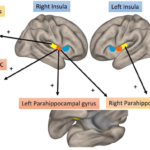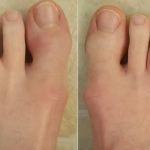Over the years, it became clear that innate and adaptive immune cells were responsible, at least partially, for the immune-mediated psoriatic syndrome. Among the most significant advances in our appreciation of the pathogenesis of PsA is the central role played by the pro-inflammatory subset of CD4+ T cells known as Th17 cells.36 These cells are activated by IL-23 to secrete the cytokines IL-17A, IL-17F and IL-22, which act on resident surrounding epithelial and endothelial cells to elicit the production of inflammatory cytokines and chemokines, often leading to the recruitment of other inflammatory cells and activation of innate epithelial defense mechanisms.37
In particular, elevation of Th17 cell subsets has been observed in peripheral blood, skin and joints of patients with psoriatic disease, and biologic therapies targeting both IL-23 and IL-17 are now U.S. Food and Drug Administration-approved for the treatment of moderate to severe psoriasis and joint disease.38-41
As discussed, other Th17 cells participate in psoriatic inflammation and have been shown to differentiate PsA from other arthritides (e.g., rheumatoid arthritis). Specifically, γδ-IL-23R+, IL-17-producing entheseal resident cells have been found to drive inflammation in an animal model of PsA-like disease.42 As in the gut, it was also reported that CD8-T cells and ILC-3 cells, both of which also release IL-17, are expanded in psoriatic but not rheumatoid joint fluid.43
In humans, the role of CD8+ T cells has been long recognized.44 In fact, the number of these cells significantly correlates with both disease activity and inflammatory findings on musculoskeletal ultrasound. With the advent of single cell sequencing technologies, clonal expansions of CD8+ T cells in PsA synovial fluid were identified, some of which were also deemed tissue-resident memory T cells and characterized by their capacity to produce multiple proinflammatory cytokines (i.e., IL-17, tumor necrosis factor [TNF] and interferon-γ).45,46
Similarly, transcriptomic analyses comparing skin and joint biopsies demonstrated a predominant Th17 profile in psoriatic skin, and psoriatic synovial tissues exhibited strong signals in TNF and angiogenic pathways.47,48 Altered bone remodeling in PsA is characterized by dysfunctional osteoblast and osteoclast activity, which can lead to concomitant erosions and osteoproliferation within the same person. Multiple studies revealed that both IL-17 and TNF are important in driving this abnormal bone turnover, which is at least partially driven by an increase in the osteoclast precursor population, that could serve as yet another distinctive target for arthritis treatment and prevention.49,50
Despite this accumulating body of knowledge, critical gaps in our understanding of PsA etiology and the triggers behind TNF-producing cell activation, Type-17 cell expansion and the yet to be uncovered mediators of skin and joint inflammation greatly hinder our ability to identify pre-clinical arthritis in psoriasis patients.


